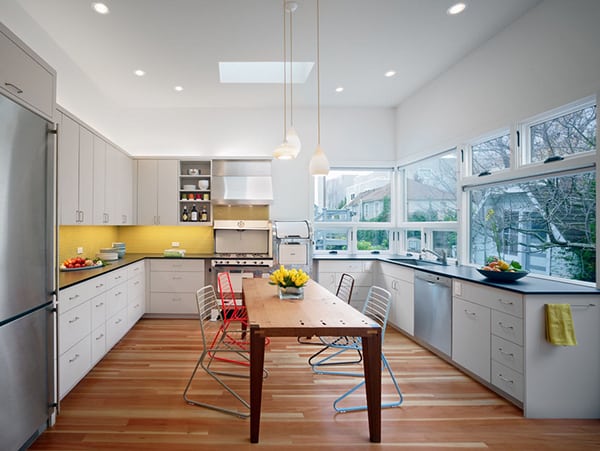
18th Residence is a modern home renovation, located along one of the Mission District’s most cosmopolitan blocks in San Francisco, California, designed by Chr DAUER Architects. The Italianate home was expanded with two substantial yet stealthy additions. Peeking out above the restored front facade, a new third story bedroom level hints at the comprehensively transformed spaces within. The project integrates modern design, bountiful natural light sources, high efficiency systems, and re-purposed building materials with new and original hand-crafted detailing.
The kitchen addition connects with the rear green space and floods the room with natural light through large horizontally banded, counter height windows. Formaldehyde-free painted cabinetry with countertops made of resin coated recycled paper are easily maintained and environmentally sound.
The kitchen table, crafted by a local artisan using salvaged redwood and Douglas fir from the building site, is the center of daily family meals. The 1940’s Magic Chef double oven range—inherited from the client’s family—was restored and incorporated seamlessly into its new modern environment.
The living room was restored to be a bright and crisply appointed space for entertaining and music. The original Douglas fir flooring was refinished and complimented by the pale green painted trim.
A new ceiling oculus-skylight with spherical chrome pendant fixture diffuses natural light throughout the room, The original faux-grained built-ins and trim were restored to reinstate the dining room’s prominence.
The main floor bath-laundry features the original clawfoot tub in the midst of modern fixtures, finishes, and conveniences.
Fabricated by the architect, the threaded wood balusters offer contrast to the naturally finished Douglas fir railings. In series, the balusters resemble both a finely turned woodwork and raw pieces of building hardware.
The balusters were turned for the owners as a “house warming gift”.
The composition of the large north-facing master bedroom window system provides visual access to the out-of-doors while screening views from adjacent neighbors.
The 2nd and 3rd story additions at the rear of the house share a common paint scheme, but differ in siding treatments to accentuate their respective volumes and reduce the presence of the back of the building. The third floor roof and lower kitchen decks are bordered by redwood railings with looped wire panels, made from fencing that typically bordered Victorian gardens.
Photos: Bruce Damonte

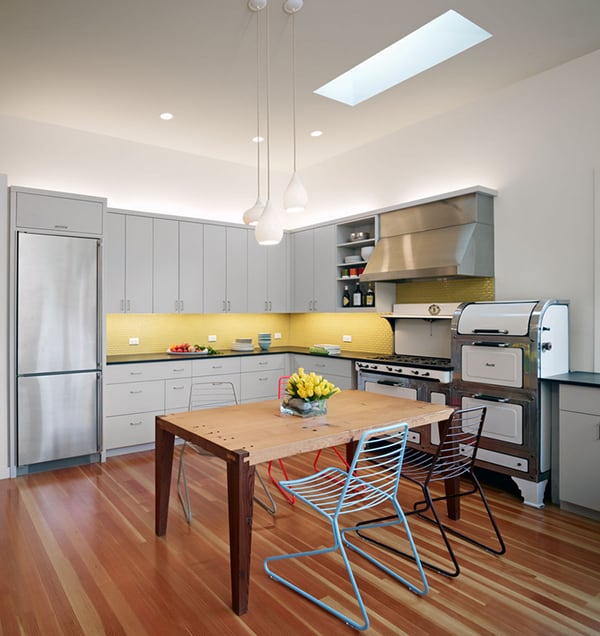


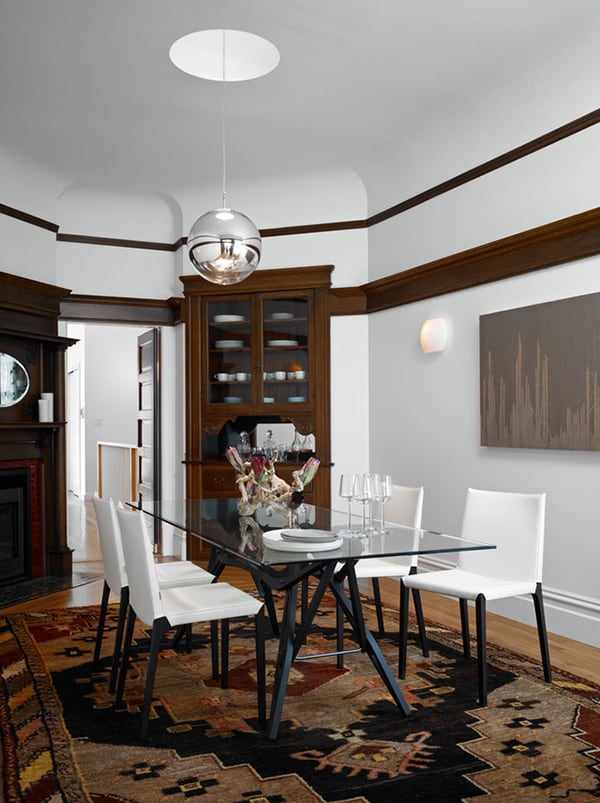
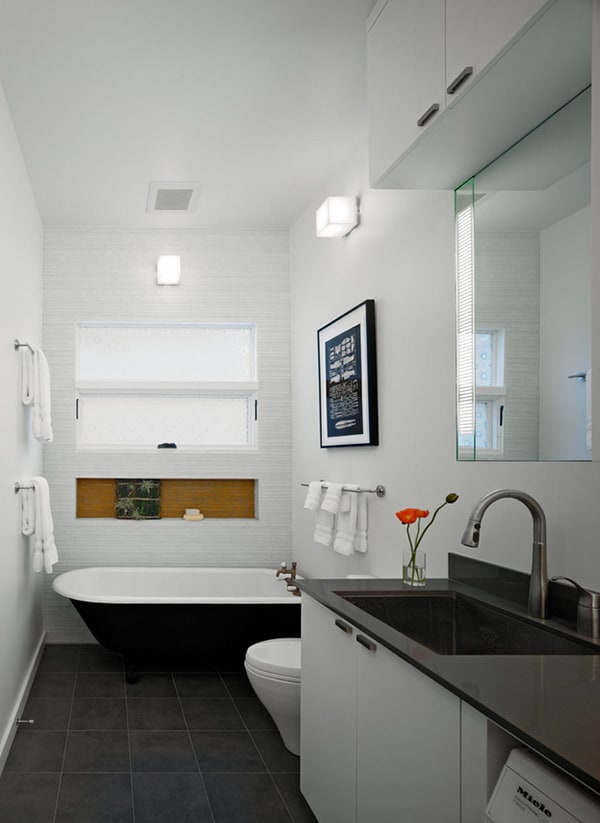
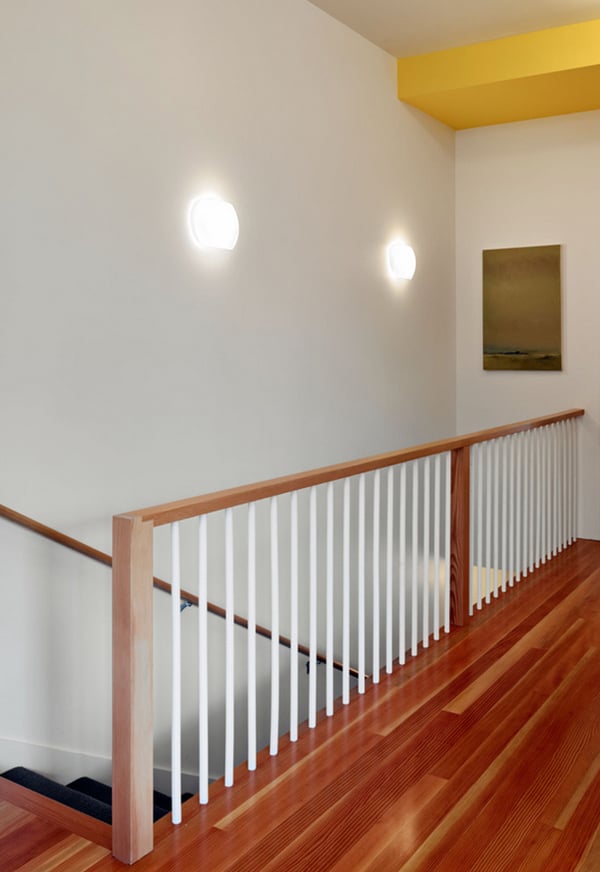
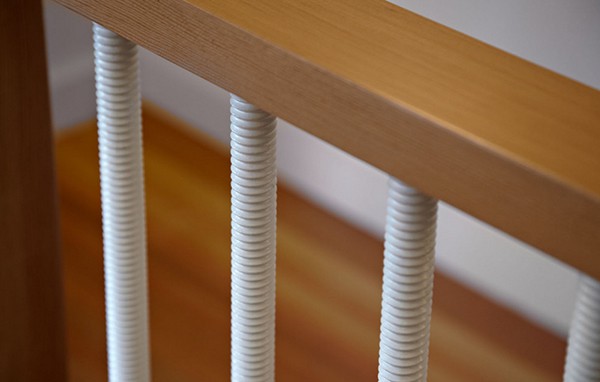
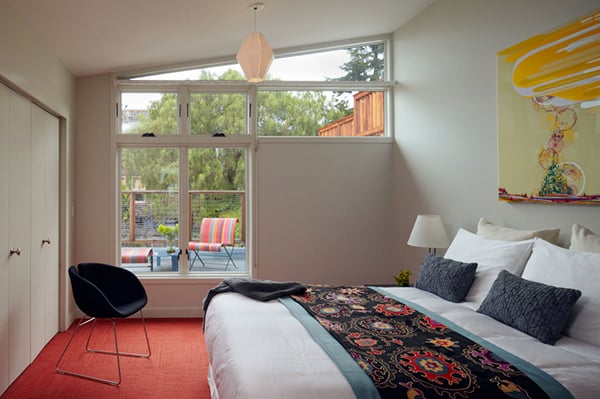

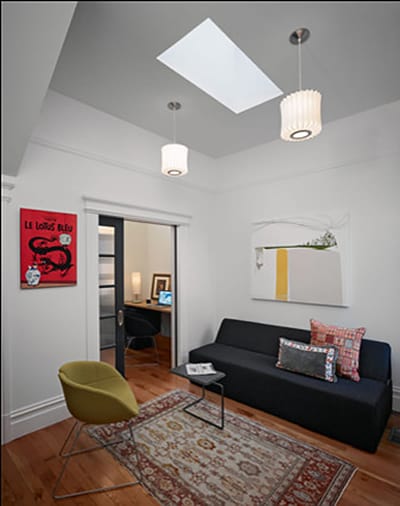
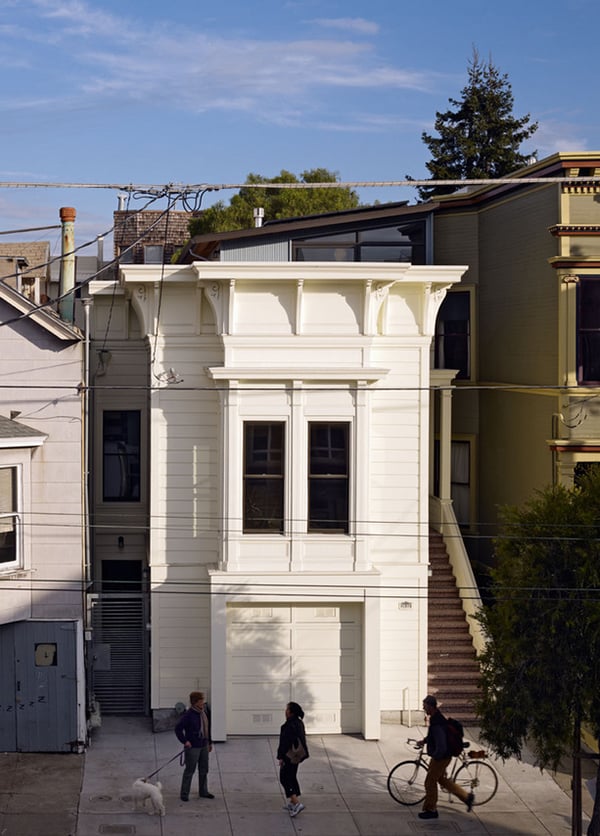

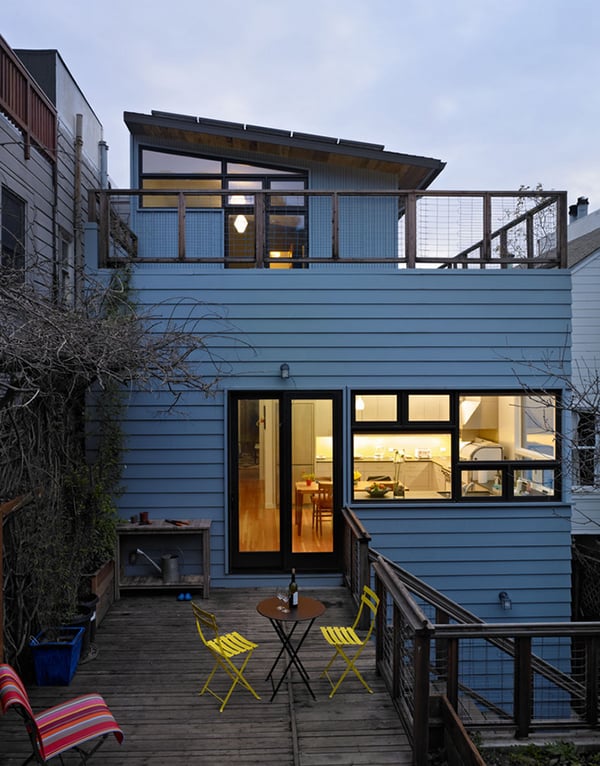

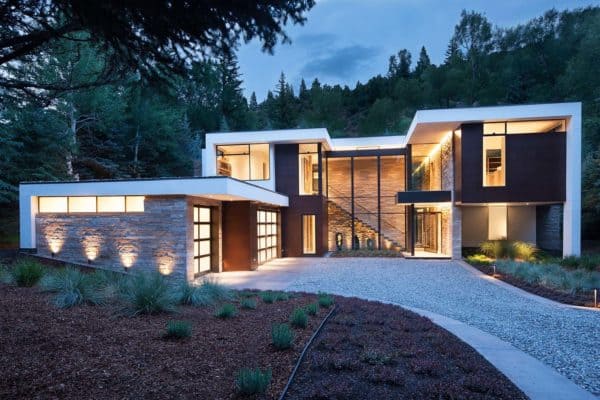

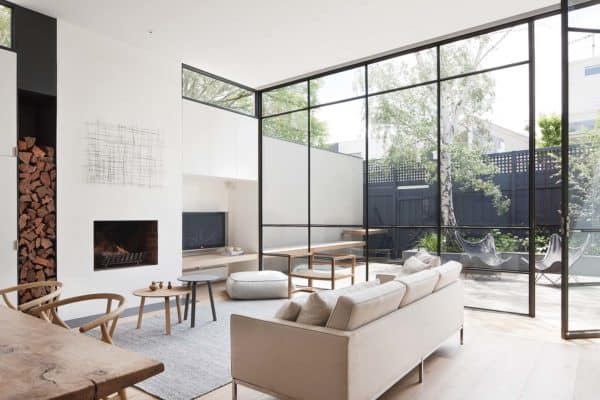

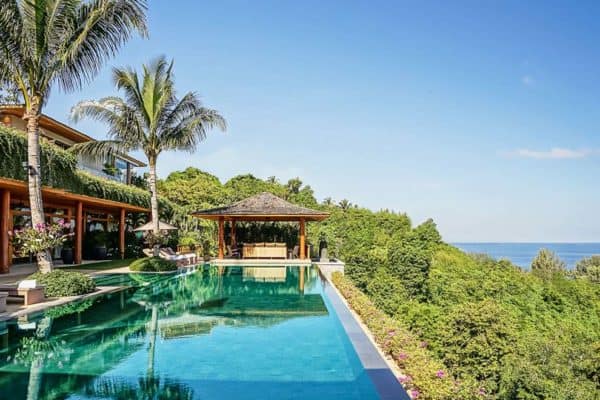

0 comments